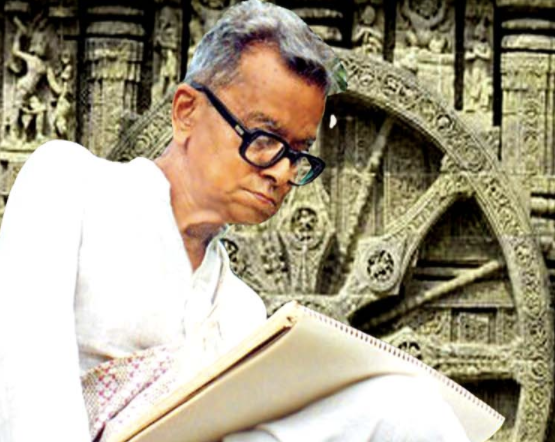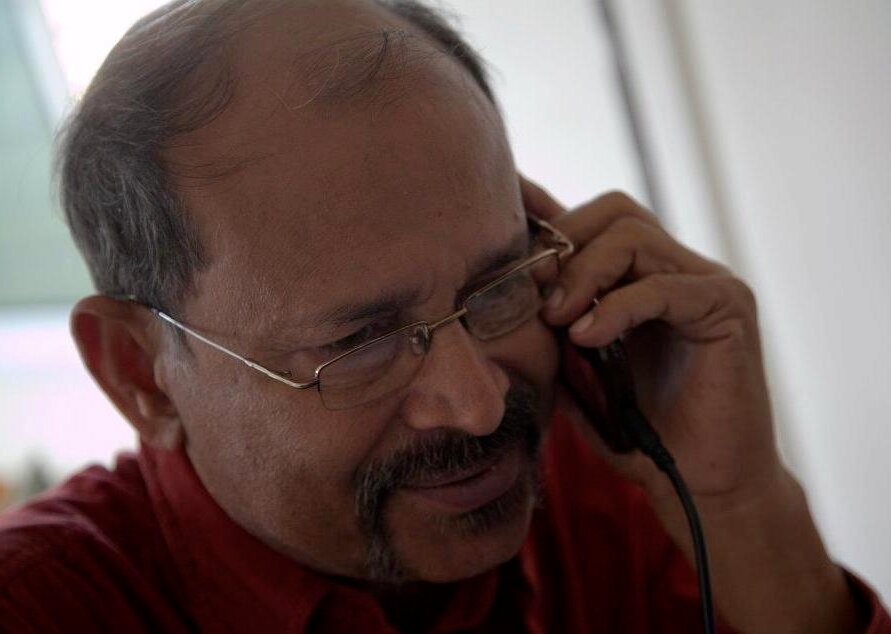
[the_ad_placement id=”adsense-in-feed”]
First Person
 By Nachiketa Desai*
By Nachiketa Desai*
As the scion of an aristocratic Zamindar family, Manmohan Choudhuri had the right environment and opportunity to pursue a successful career in judiciary, civil service, engineering, medicine or any other lucrative profession. He had a scientific bent of mind with a refined sense of art, culture and literature. From early childhood he displayed all the essential ingredients required for making of a scientist, engineer, master craftsman, artist and innovator. But, Manmohan chose to dedicate his life to the cause of ‘Hind Swaraj’ envisioned by Mahatma Gandhi – a just and humane world based on non-violence and perfect harmony between man and mother earth. For this ideal, Manmohan gave up all the luxuries of life and lived like a peasant and village artisan.
[the_ad_placement id=”content-placement-after-3rd-paragraph”]
Born to Ramadevi and Gopabandhu Choudhuri on October 11, 1915, the year barrister Mohandas Karamchand Gandhi returned to India from South Africa, Manmohan, like his parents, chose a life dedicated to the cause of India’s independence and uplift of the poor. Giving up his job as the deputy magistrate in the British colonial government, Gopabandhu Choudhuri left his palatial mansion of Cuttack to move to a flood-prone small riverside village and lived like a small farmer.
After his matriculation, Manmohan’s father Gopabandhu Choudhuri asked him if he would like to pursue higher education in science in Germany. But Manmohan declined and joined Satishchandra Dasgupta’s ashram at Sodepur, Calcutta. Inspired by Mahatma Gandhi, Satishbabu had left Bengal Chemicals and started the ashram where he carried out research and development in the field of village and cottage industries. At Sodepur, Manmohan learned various crafts including carpentry, processing of leather from raw hide, even while pursuing his education in Physics, Chemistry and Mathematics. He became a member of Calcutta’s central library where he spent the whole day on weekends reading books. By the time he returned home in Odisha, Manmohan had acquired knowledge of physics and mathematics of the level of a regular post-graduate student.
From his teenage, Manmohan evinced keen interest in photography. His father had gifted him a rudimentary box camera with which he took photographs of nature – sunset, sunrise, river, trees, flowers and birds. During Gandhiji’s first visit to Odisha at the invitation of Gopabandhu Choudhuri, Manmohan was the only photographer who captured the historic moments. Later after he got a movie camera, he made a documentary on bee-keeping. Manmohan popularized bee-keeping among farmers. Bee-keeping became so popular that villages of Cuttack district started producing tonnes of honey, adding to the income of small and marginal farmers.
Though hailing from an upper caste Hindu family – his grandma practiced strict untouchability – Manmohan broke all social barriers to process hides of dead cattle to make leather. He would carry the carcass of dead cattle, skin them and turn them into leather through chemical process. Manmohan practiced what he preached. So when it came to the education of his twin children Kabir and Madhavi along with two nephews Gyandev and Karmadev, attended the same basic school which other village children went, learning how to read and write while doing manual work in field and workshops. Manmohan’s pursuit of knowledge continued till the very last.
During his incarceration in jail at the time of Emergency, he learned German, updated his knowledge of physics and wrote a book on nuclear science in Oriya, explaining the complex science for laymen, used oil paint on canvas to draw portraits of his family members and finished writing his autobiography “Kasturi Mruga Sama” (Like a musk deer), for which he was given the highest award in literature. Manmohan had a penchant for learning languages. He could converse in eleven languages.His command of Odia, English, Bengali, Hindi, Gujarati, Assamese, and Telugu was the matter of envy.
He has written books in Odia, English and Hindi on a wide range of subjects. His writing skill was used most profitably by the Sarva Seva Sangh, the umbrella organization of Sarvodaya movement, in drafting resolutions on economy, national and foreign affairs. He was unanimously elected the president of Sarva Seva Sangh and was one of the four advisers to eminent social leader Jayaprakash Narayan during the turbulent movement for Total Revolution. Manmohan, who was jailed several times during India’s freedom struggle, was detained under the Maintenance of Internal Security Act (MISA) during the Emergency imposed by Mrs Indira Gandhi.
After the Independence, Manmohan could have joined mainstream politics, but he shunned every effort by politicians to make him join electoral politics. He assiduously stuck to the Gandhian ideal of ‘Hind Swaraj’, putting in all his efforts towards empowering the voiceless, poor people through his writings in the journals – Vigil and Sarvodaya Jagat. He was a multi-facet self-made man who lived the ideals he was committed to till his last breath.
(Note: The late Shri Manmohan Choudhuri was my Mamu)
*The writer is a senior journalist and grandson of eminent freedom fighter and Mahatma Gandhi’s personal secretary Mahadev Desai
[the_ad_placement id=”sidebar-feed”]





